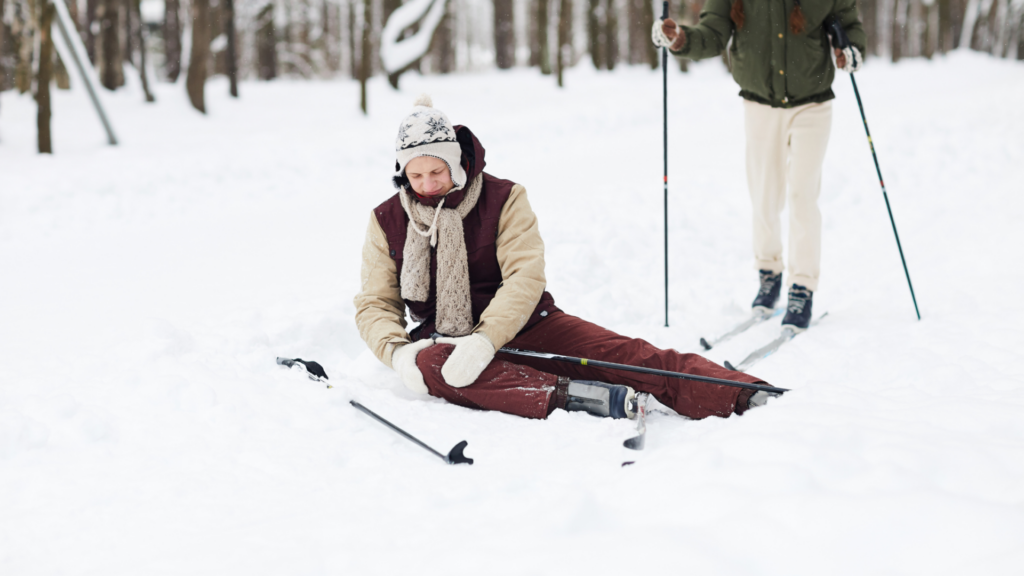Common Ski Injuries and How to Prevent Them

Skiing is a popular winter sport that offers both an adrenaline rush and a chance to enjoy the beauty of nature. However, like any physical activity, skiing carries the risk of injury. At Kintsugi Physical Therapy & Wellness, we want to help you stay safe on the slopes by providing information on common ski injuries and how to prevent them.
Common Ski Injuries
Anterior Cruciate Ligament (ACL) Tears
The ACL is one of the major ligaments in the knee and is commonly injured during skiing, especially when skiers experience a sudden twist or fall. Proper technique and the use of appropriate equipment can help prevent ACL tears. Learn more about physical therapy for pain and how it can help with ACL tears.
Medial Collateral Ligament (MCL) Sprains
The MCL is another crucial knee ligament that can be injured when the ski tips are forced together, causing the knee to twist. Strengthening the muscles around the knee and practicing proper skiing form can help reduce the risk of MCL sprains.
Skier’s Thumb
Skier’s thumb occurs when the thumb is forced away from the hand, causing damage to the ligaments. This injury can be prevented by using ski poles with proper wrist straps and learning how to hold the poles correctly.
Wrist Fractures
Falling on an outstretched hand while skiing can lead to wrist fractures. Wearing wrist guards and learning how to fall safely can minimize the risk of this injury.
Snowboarder’s Ankle
This injury is a specific type of ankle fracture that occurs when a snowboarder lands on the edge of their snowboard. Wearing appropriate snowboard boots and practicing proper landing techniques can help prevent snowboarder’s ankle.

Preventing Ski Injuries
Physical Preparation
Before hitting the slopes, it’s essential to engage in regular physical activity, focusing on strength, flexibility, and cardiovascular fitness. Our wellness programs at Kintsugi Physical Therapy & Wellness can help you prepare for skiing season.
Use Proper Equipment
Wearing appropriate gear, such as helmets, goggles, wrist guards, and well-fitted ski boots, can help reduce the risk of injury.
Follow Safety Guidelines
Observe skiing area rules, stay within designated skiing areas, and take regular breaks to avoid skiing when fatigued.
Take Ski Lessons
If you’re new to skiing or want to improve your technique, consider taking lessons from a qualified instructor. Proper technique can help minimize the risk of injury.
What to Do if You Suffer a Ski Injury
Apply immediate first aid using the RICE method (Rest, Ice, Compression, Elevation).
Seek professional medical help for a proper diagnosis and treatment plan.
Consult with a physical therapist, like our experienced team at Kintsugi Physical Therapy & Wellness, to develop a rehabilitation program tailored to your specific injury and needs. Visit our physical therapy page for more information.

Let Kintsugi Physical Therapy & Wellness Help!
Skiing can be an enjoyable and invigorating winter activity, but it’s essential to take necessary precautions to avoid injuries. By preparing physically, using proper equipment, following safety guidelines, and learning correct skiing techniques, you can reduce your risk of injury and enjoy a safe skiing experience. If you do suffer an injury on the slopes, seek prompt medical attention and consult with a physical therapist to develop a rehabilitation plan.
At Kintsugi Physical Therapy & Wellness, we’re committed to helping you recover from injuries and achieve your wellness goals. Check out our testimonials to see how we’ve helped others on their journey to recovery and improved well-being.
References
American Academy of Orthopaedic Surgeons. (2016). Prevent winter sports injuries. Retrieved from https://orthoinfo.aaos.org/en/staying-healthy/prevent-winter-sports-injuries/
Johnson, R. J., Ettlinger, C. F., & Shealy, J. E. (2009). Update on injury trends in alpine skiing. Journal of ASTM International, 6(7), 1-7. Retrieved from https://journals.sagepub.com/doi/abs/10.1520/JAI101887
Koehle, M. S., Lloyd-Smith, R., & Taunton, J. E. (2002). Alpine ski injuries and their prevention. Sports Medicine, 32(12), 785-793. Retrieved from https://pubmed.ncbi.nlm.nih.gov/12457423/
National Ski Areas Association. (n.d.). Your responsibility code. Retrieved from https://www.nsaa.org/safety-programs/responsibility-code/
Smith, M. (2012). Injury prevention and safety awareness for skiers and snowboarders. Journal of Prolotherapy, 4(2), 728-734. Retrieved from https://www.ncbi.nlm.nih.gov/pmc/articles/PMC3440424/
